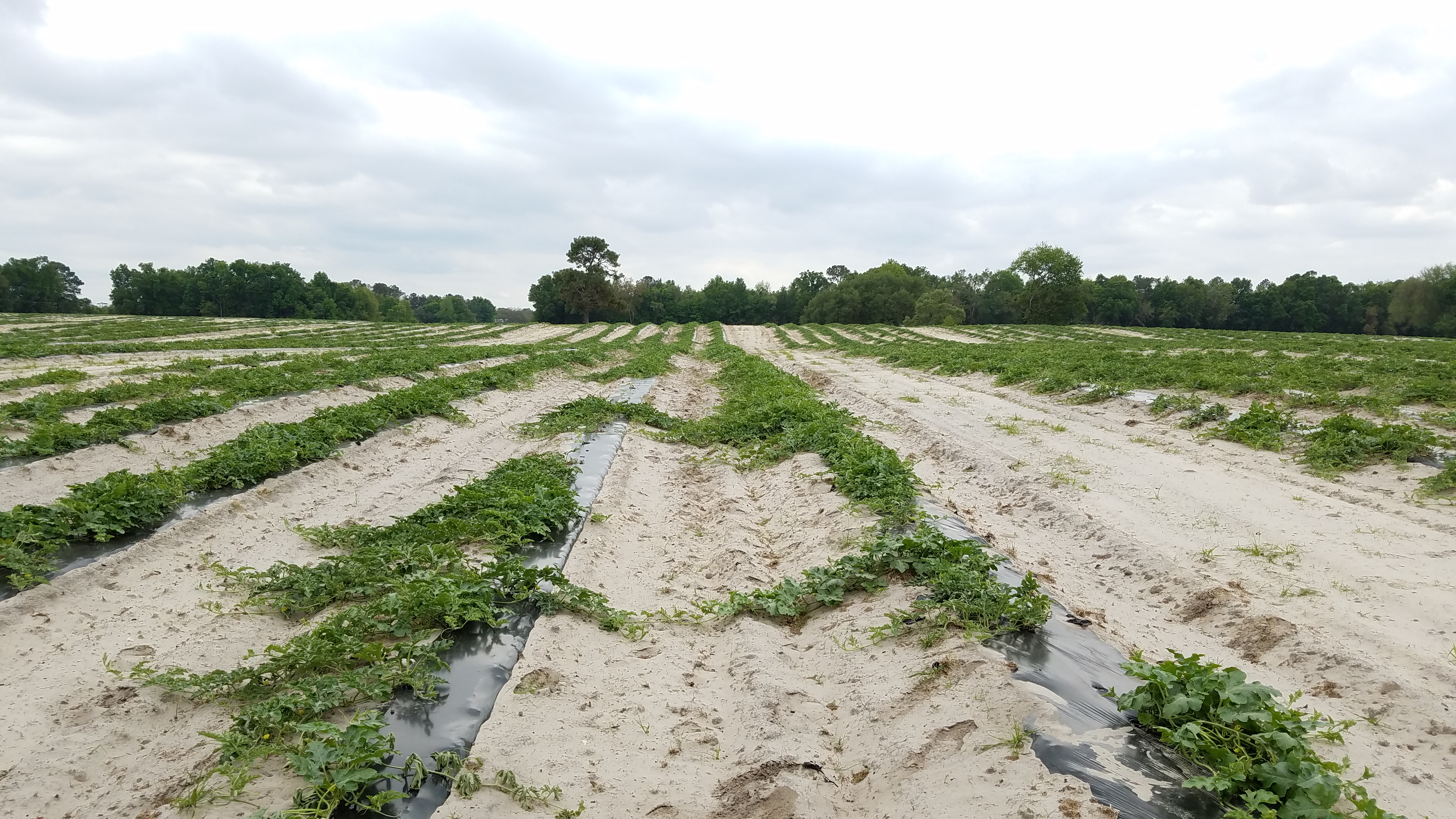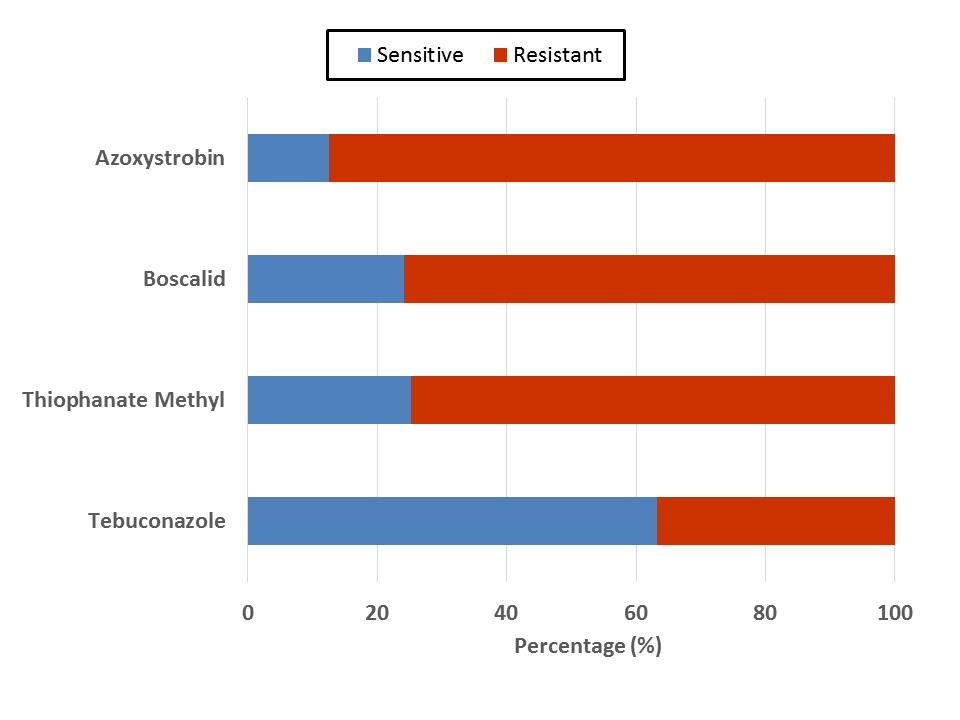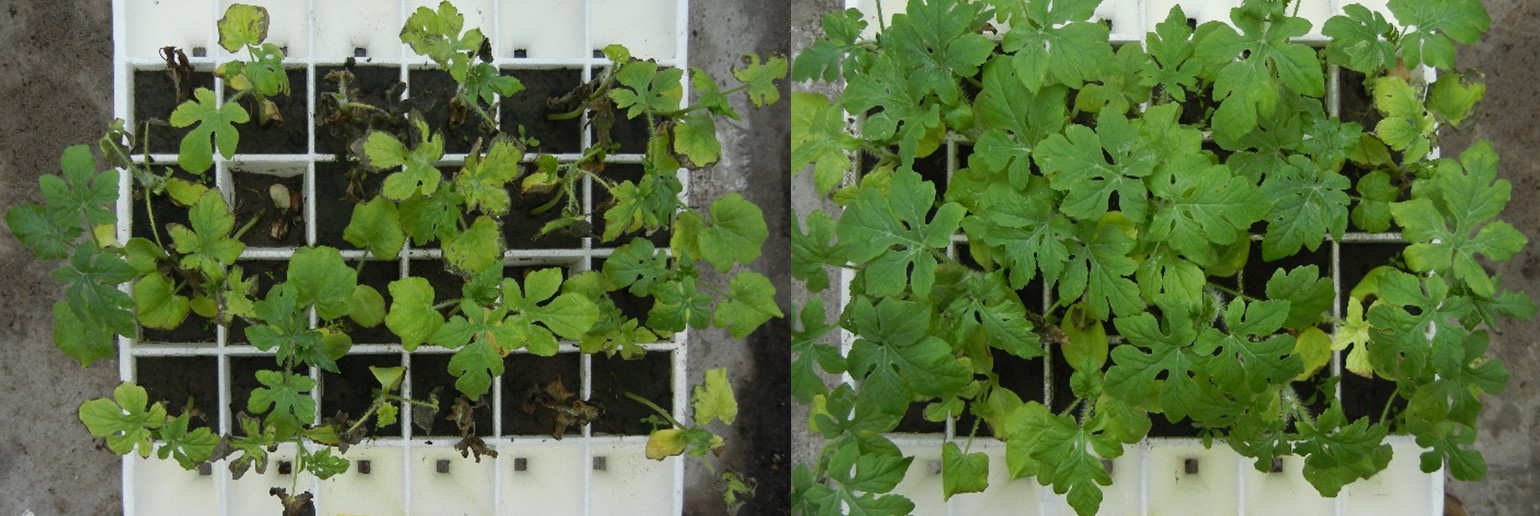
Figure 1. A field infected with Fusarium wilt. Areas with missing plants are regions that have higher levels of inoculum. Recording this damage can be useful for future disease management at this site.
by Nicholas S. Dufault, Bimal S. Amaradasa and Mason J. Newark
With the watermelon production season starting in Florida, now is a good time to either begin or modify disease management strategies for this crop. There are many things to consider when planning a disease management program, but there are three strategies to consider when preparing a personalized plan for your cucurbit fields in 2017:
1. Site Selection and Cropping History
Site selection and preparation are critical steps to managing any disease, especially soil borne pathogens like southern stem blight (Sclerotium rolfsii) and Fusarium wilt (Fusarium oxysporum)(Fig. 1). At sites that have had a history of soil borne and even foliar diseases, it is important to reduce the risk of pathogen carryover. This can be done by long-term crop rotations to non-host crops (e.g. grass crops), destruction of plant host material by herbicides and tillage, through soil fumigation, or biological control options that help reduce the amounts of the pathogens in the soil. In the case of Fusarium wilt, knowing the history of the disease at a specific site is important for predicting possible future problems related to this disease, and it may be possible to alter planting dates and/or apply fungicides and fumigants to help manage this pathogen. These techniques can work for many other pathogens, and more information can be found by contacting your local extension office about cultural techniques that can help with your pathogen of interest.
2. Cultivar Selection and Monitoring Transplants
Cultivar selection and monitoring transplants are very important for disease and nematode management in any cucurbit production system. Practical control of many diseases is achieved through host resistance. It is important to identify the resistance traits of a variety, as it can help with chemical selection and disease identification. Rouging or removing diseased transplants is another way to reduce the amount of pathogen present in a field, and can help delay disease onset in many situations (Fig. 2). Whenever feasible, even the transplants not showing symptoms near or adjacent a diseased one should also be removed as many of these plants may be infected but asymptomatic. Prudent cultivar selection and monitoring at the beginning of the season can delay many problems and possibly improve in-season control strategies.
3. Chemical Control
Finally, it is never too early to consider what chemical or biological control options are available, based on the site’s disease history, cultivar’s resistance traits, and disease presence in transplants. In Florida, chemical management is a common practice for controlling many diseases. There are many products available for disease management and more specific product information can be found in the cucurbit chapter of the vegetable production handbook. One major thing to consider in any spray program is how to manage for the possibility of resistant pathogen populations to various chemistries. Rotation of chemistries as well as scouting are key to applying the proper products at the right time. For example, significant levels of resistance to the Gummy Stem Blight pathogen (Stagonosporopsis spp.) has been identified in Florida to 4 major chemistries of fungicides (Fig. 3). Small plot research has also indicated that in as little as 3 sprays of the product boscalid (e.g. trade name Endura®), significant shifts towards a resistant population can occur. Thus, it is critical to follow the fungicide label recommendations when applying a fungicide and avoid using fungicide products in consecutive sprays. There are many products available for managing fungal diseases in cucurbits and some example spray programs for various diseases of watermelon can be found in this spray guide – UF/IFAS 2017 Watermelon Spray Guide.

Figure 3. The percentage of Stagonosporopsis spp. isolates, the Gummy Stem Blight pathogen, collected between 1996 and 2016 in Florida watermelons that are sensitive or resistant to the various fungicidal products (y-axis). The trade names of the products tested were Quadris® for azoxystrobin, Endura® for boscalid, Topsin® for thiophanate –methyl and TebuStar® for tebuconazole.
There are many options available when managing diseases of watermelons, and often integrated techniques will provide better management than a single option. These three topics are a great place to start when developing a management program, but remember that environment is also important to disease development, which can change a program mid-season. Continued monitoring throughout the season is also critical to any crop production system.
- 2025 End-of-Season Florida Peanut Disease Notes - October 24, 2025
- Southern Rust Confirmed in the Florida Panhandle – June 2025 - June 6, 2025
- Stay Ahead of Disease with the Spore Report: A New Tool to Assist with Potato and Watermelon Management - April 11, 2025

